Psych 002 UCR Study Guide: Final Exam Terms & Definitions
1/199
There's no tags or description
Looks like no tags are added yet.
Name | Mastery | Learn | Test | Matching | Spaced |
|---|
No study sessions yet.
200 Terms
Stress
Response based and Stimulus Based. A process whereby an individual perceives and responds to events that the individual appraises (judges) as overwhelming or threatening to their well-being.
Response-based
Physiological responses that occur when faced with demanding or threatening situations.
Stimulus-based
A demanding, challenging, or threatening event or situation.
Stress Vs. Stressor
Stress: A physical and mental response to a a challenging or threatening situation
Stressor: A stressful stimulus or situation demanding adaptation
Appraisal
The way you evaluate events that happen to you.

Primary appraisal
Judgement about the degree of potential threat to well-being that a stressor might entail.
Threat
Stressor that could lead to harm/loss/negative consequences.
Challenge
Stressor that carries the potential for gain/personal growth.
Secondary appraisal
Judgement of the options available to cope with a stressor, and perceptions of how effective such options will be.
Health Psychology
Studies psychological influences on health, illness, and how people respond when they become ill.
Three Categories of Stress
Physiological: stress on the body
Psychological: stress from (interpretation of) life events
Sociocultural: stress from forces that affect social/cultural group
Response to a Normal Stressor
The physical response to a normal stressor is fairly universal:
- An initiation of arousal
- A protective behavioral reaction (fight or flight)
- Internal response of the autonomic nervous system
- A decrease in the effectiveness of the immune system,
Autonomic Nervous System
The part of the peripheral nervous system that controls the glands and the muscles of the internal organs (such as the heart). Its sympathetic division arouses; its parasympathetic division calms.
Sympathetic Division
Controls functions that accompany arousal and expenditure of energy.

Parasympathetic Division
Controls functions that occur during a relaxed state.Acute Stress: A temporary pattern of stressor-activated arousal with a distinct onset, and limited duration
Short term stress
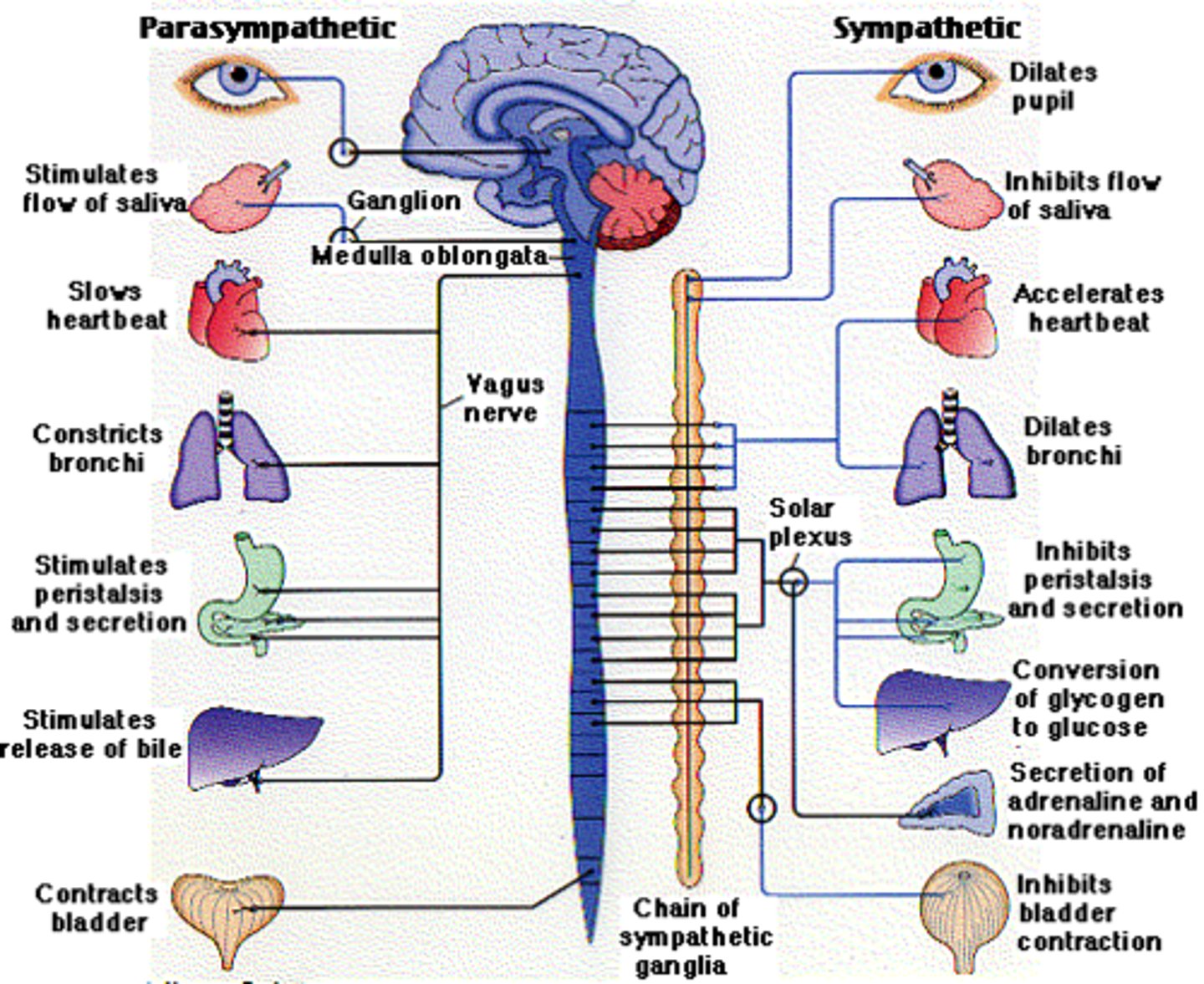
Arousal
Activation of the central nervous system, rapid pulse, the deeper breathing, the increase of sugar in the blood, the secretion from the adrenal glands.
Fight-or-flight response
Physiological reactions that occur when an individual encounters a perceived threat. Activation of the sympathetic nervous system and the endocrine system. Adaptive response in preparation for effort/energy expenditure.
The HPA Axis
Hypothalamus, pituitary gland, and adrenal cortex. Interaction between the nervous and endocrine systems to produce the body's response to stress. Elevated levels of one of these hormones may lead to depression.
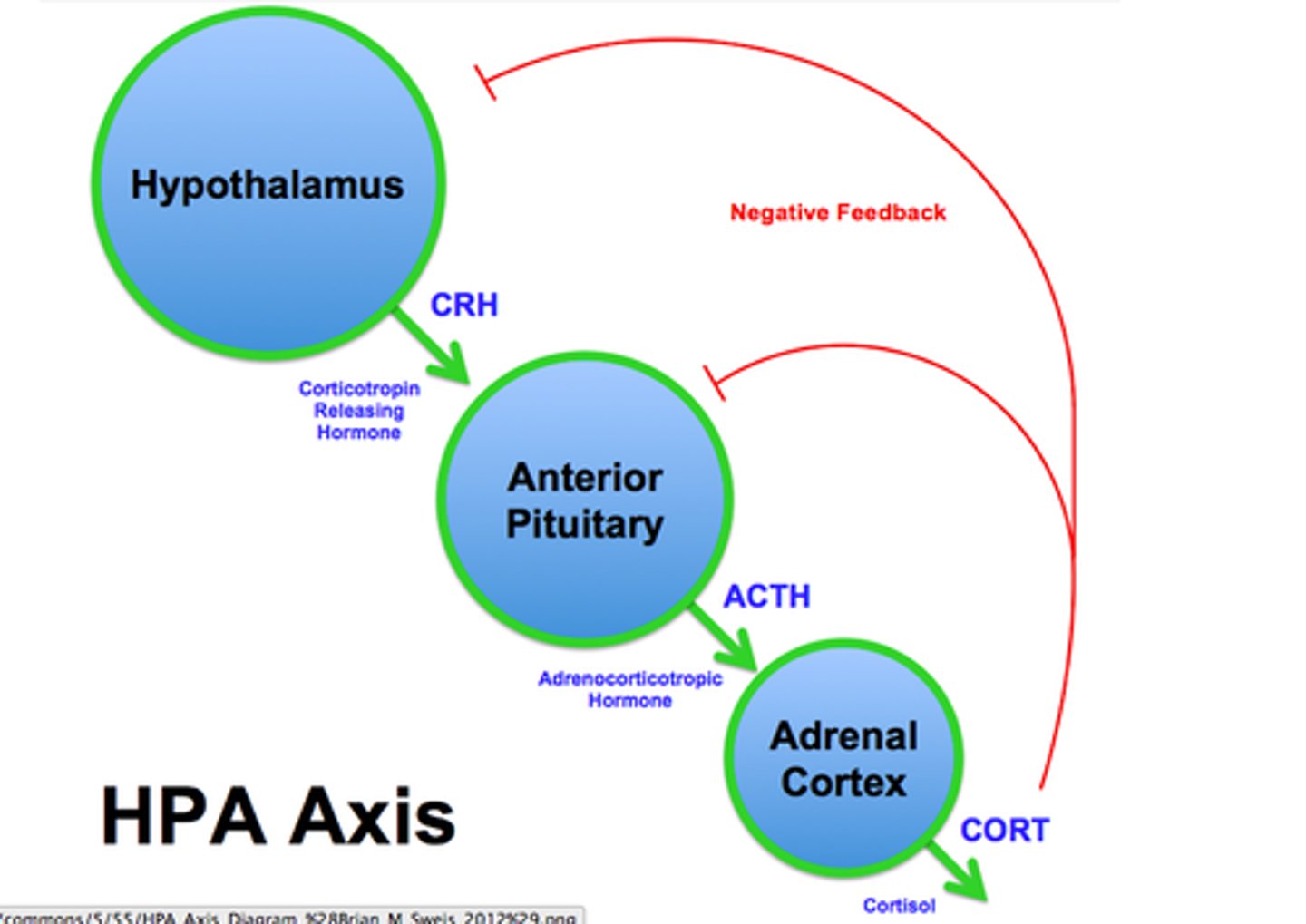
Acute Stress
A temporary pattern of stressor-activated arousal with a distinct onset, and limited duration. Short term stress.
Chronic Stress
A continuous state of stressful arousal, persisting over time.
Long term stress. Humans are capable of experiencing and dealing with stress for prolonged periods. Highly social, Analytical minds. Becomes a problem if it goes on too long.
Effects of Stress
Physiological - accelerated heart rate, headaches, or gastrointestinal problems.
Cognitive - difficulty concentrating or making decisions.
Behavioral - drinking alcohol, smoking, or taking actions directed at eliminating the cause of stress.
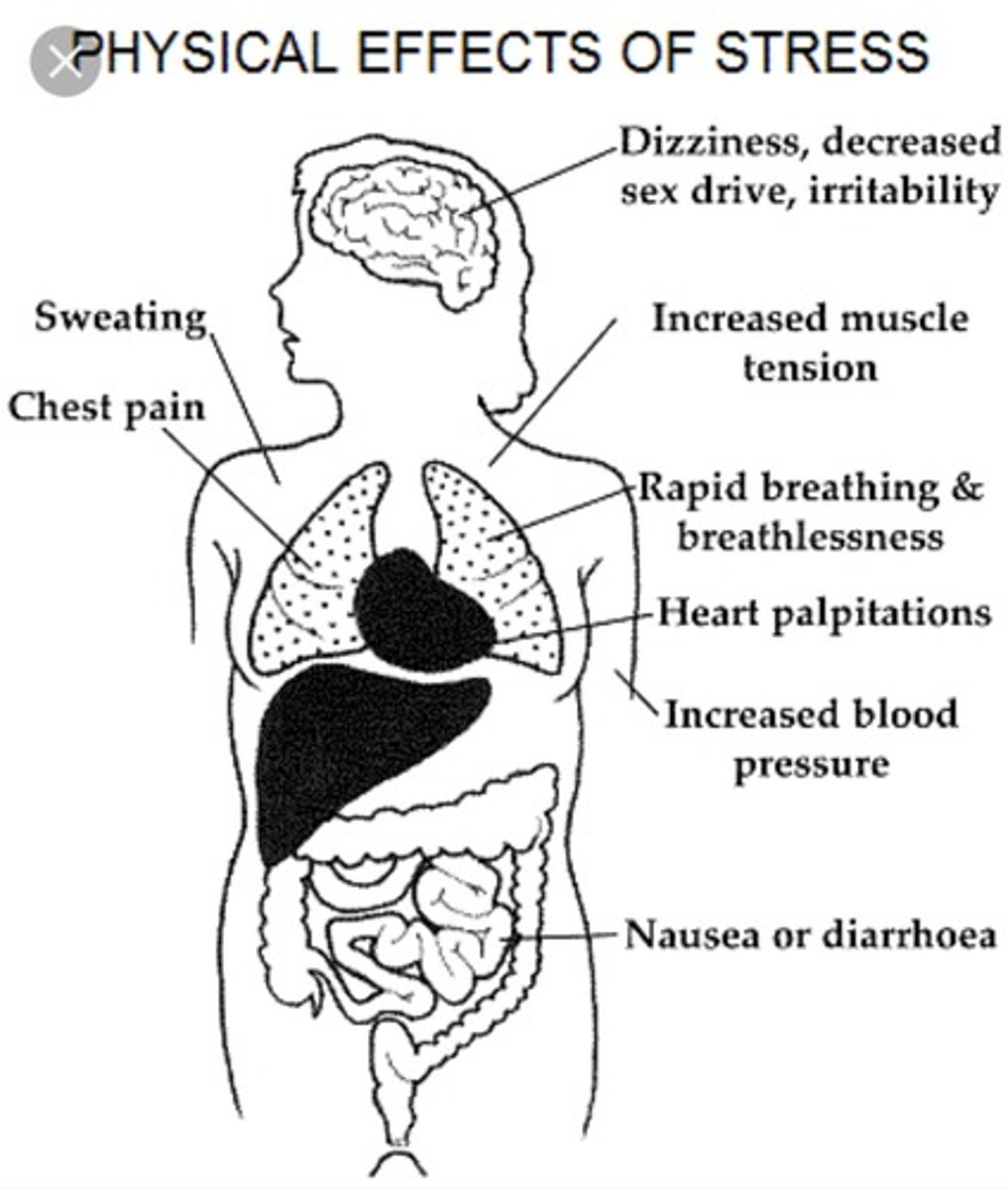
General Adaptation Syndrome
Pattern of physical responses to any serious chronic stressor.'
Alarm Reaction - the body mobilizes it's resources to cope with a stressor. Resistance - the body seems to adapt to the presence of the stressor. Exhaustion - the body depletes it's resources.
Cortisol
Stress hormone, helps our bodies respond to brief stress.
Chronically high levels damage the body.
The Immune System
Protects the body by producing leukocytes (white blood cells).
Stress as a Sudden Emergency
Temporary immune system repression makes sense, Immune responses consume energy, Stress results in a rapid mobilization of energy, Infection doesn't matter if you don't escape, Adrenal steroids also suppress inflammation.
Prolonged Stress Response
Produces symptoms similar to depression. Weakens the immune system. Harms hippocampus. Toxins or overstimulation damage or kill neurons.
Psychoneuroimmunology
The study of how psychological, neural, and endocrine processes together affect the immune system and resulting health. CNS and Behavior. Stressful exams reduce the immune system.

Stress can shorten telomeres
Protect ends of chromosomes, May inhibit cell division/growth and proliferation of new cells, causing more rapid aging. Shorter in adults who experienced more trauma as children.

Negative Affectivity
Tendency to experience distressed emotional states involving anger, contempt, disgust, guilt, fear, and nervousness.
Hypertension
Can be caused by stressors including job strain, marital conflict, natural disasters, and negative affectivity. Forces the heart to pump harder increasing physical strain.
Heart Attack Symptoms
Different for Males and Females. Typically, Chest pain, chest heaviness, pale skin, weak pulse, nausea, vomitting, pain radiating to left arm, indigestion, short of breath, sweating.
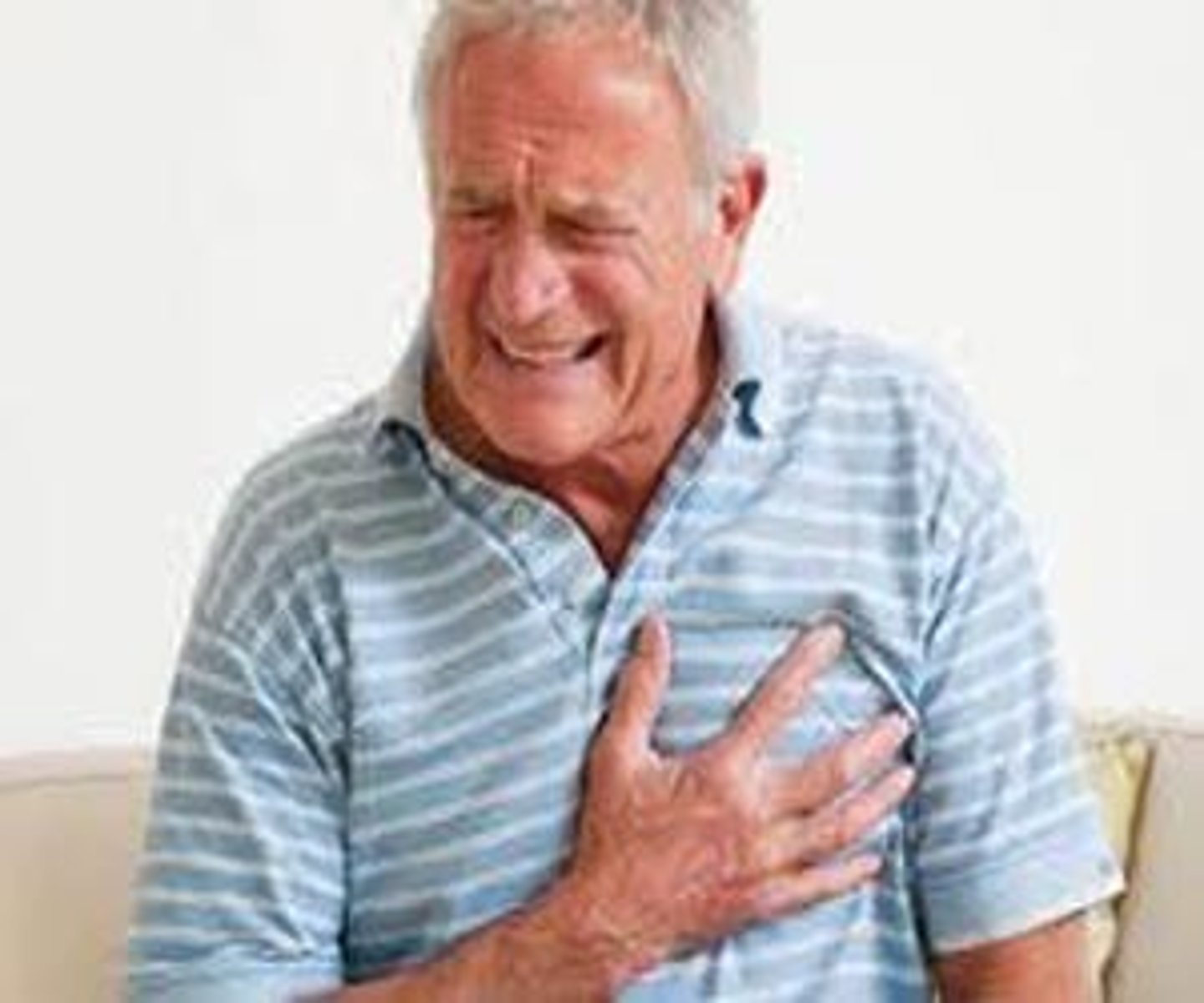
Type A and Type B Personalities
Type A: behaviour tends to be competitive and compulsive, more prone to heart disease, most prevalent among middle/upper class men; Type B: generally laid-back
Asthma
Chronic disease of inflamed and narrowed airways. Stressful experiences linked to developing asthma. Expecting symptoms may lead to symptoms, Often occurs during periods of high emotions.
Perceived Control
Beliefs about our personal capacity to exert influence over and shape outcomes. Has major implications for health and happiness. Lower reactivity to stressors in daily life. Subordinate did not have control over the shock, which created more stress, and caused health issues.
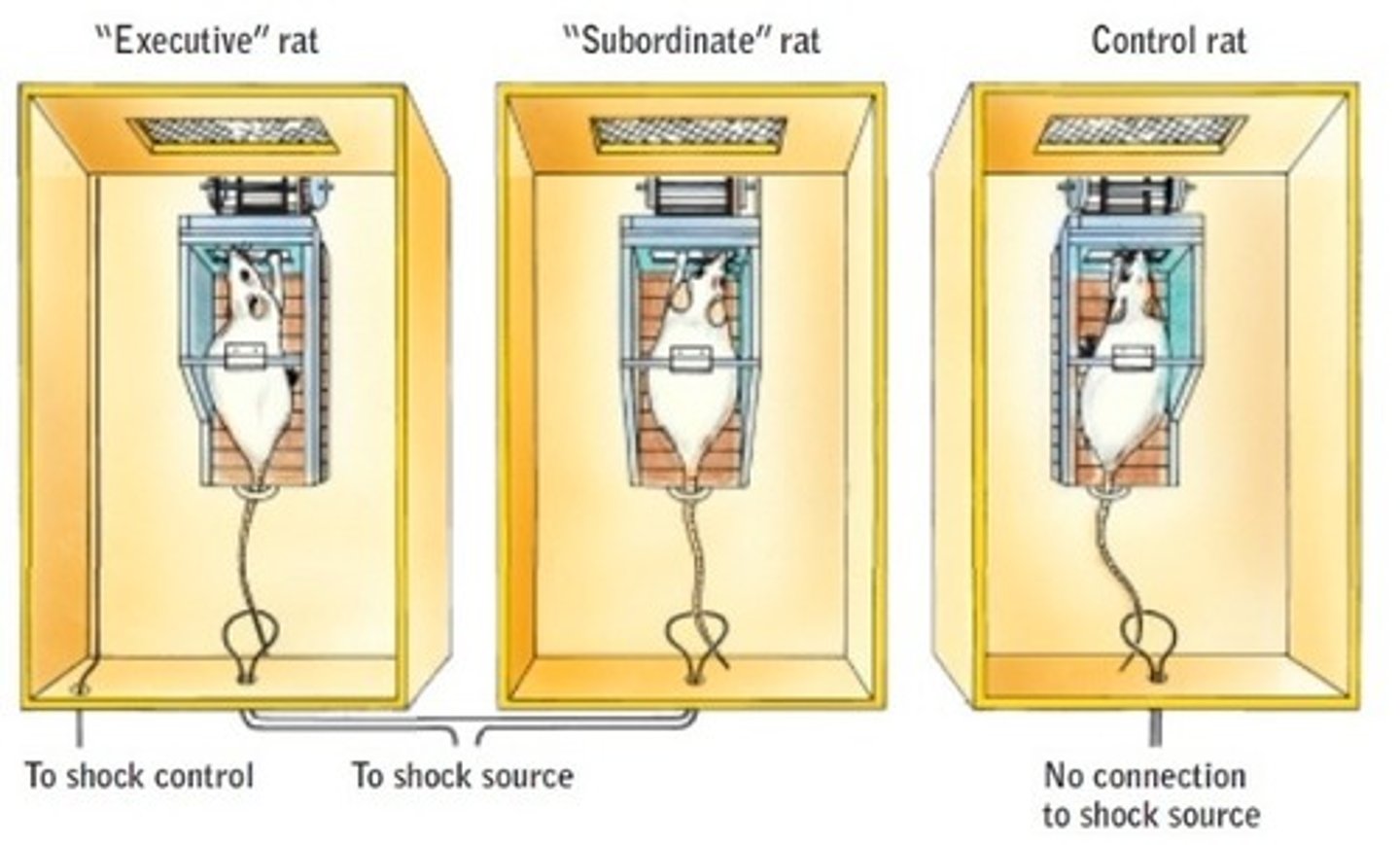
Learned Helplessness
The hopelessness and passive resignation an animal or human learns when unable to avoid repeated aversive events. Dogs placed in a chamber where they received electric shocks from which they could not escape. When given the opportunity to escape the shock, most did not try.

Catastrophic Events
A situation that threatens yours, or others' physical safety and promotes a feeling of helplessness. Certain events go beyond a "normal" stressor.
Response to Catastrophic Situations
Most people pass through five stages:
- Psychic Numbness: shock, confusion, lack of understanding
- Automatic Action: little awareness of the experience, poor memory/recall
- Communal Effort: people work together, but with little planning
- Letdown: the setting-in of the magnitude and impact of the situation
- Recovery: Survivors adapt to changes caused by the disaster.
Post-Traumatic Stress Disorder (PTSD)
A prolonged pattern of stress symptoms following trauma which are commonly associated with, but not limited to:
Combat, Assault, Torture. Behavioral: agitation, irritability, hostility, hyper-vigilance, self-destructive behavior, or social isolation. Psychological: flashback, fear, severe anxiety, or mistrust.
Resilience
The ability to tolerate, and thrive in highly stressful circumstances. Protective factors are resources that help people cope more effectively. Use of stress reduction techniques.
Intrapersonal topics
Emotions and attitudes, the self, and social cognition.
Interpersonal topics
Helping behavior, aggression, prejudice and discrimination, attraction and close relationship, and group processes and intergroup relationships.
Situationism
View that our behavior and actions are determined by our immediate environment and surroundings.
Dispositionism
View that our behavior is determined by internal factors such as personality traits and temperament.
Fundamental Attribution Error
Tendency to overemphasize internal factors as explanations for the behavior of other people and underestimate the power of the situation.

Fundamental Attribution Error Differences Cultures
People from an individualistic culture more likely to commit the fundamental attribution error. People from collectivistic cultures are more likely to emphasize relationships with others.
Actor-Observer Bias
Tendency of attributing behaviors of others to internal factors but our own to situational forces.
Attribution
Belief about the cause of a result.
Locus of control - internal vs external
Stability -extent to which the circumstances are changeable
Controllability - extent to which the circumstances can be controlled
Self-Serving Bias
Tendency of an individual to take credit by making dispositional or internal attributions for positive outcomes but situational or external attributions for negative outcomes.
Protects self-esteem - allows people to feel good about their accomplishments.

Just World Hypothesis
The belief that people get what they deserve in life and deserve what they get.
Social Roles
Pattern of behavior that is expected of a person in a given setting or group, Defined by culturally shared knowledge, Expected behavior varies across situations.
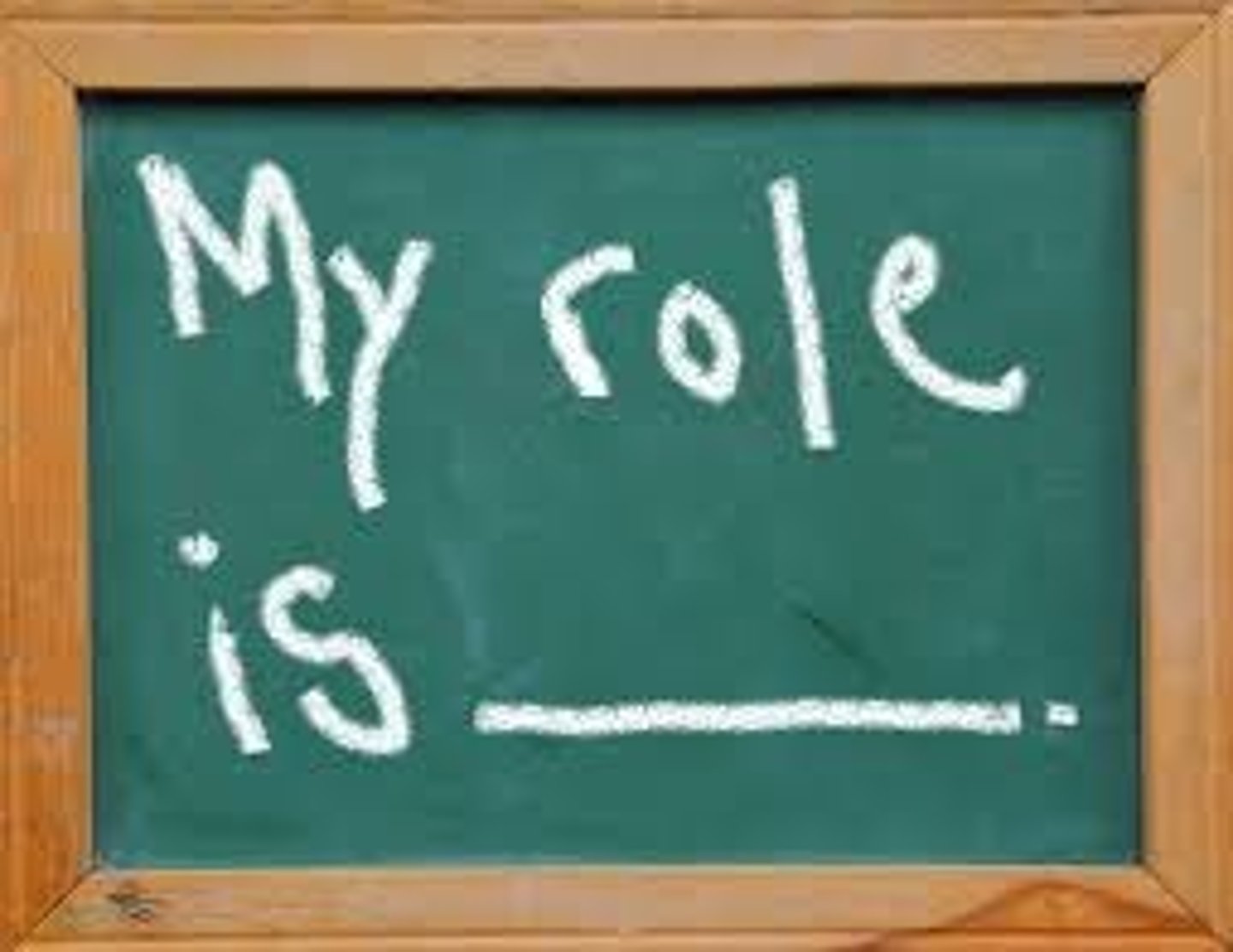
Social norm
Group expectation of what is appropriate and acceptable behavior for its members.
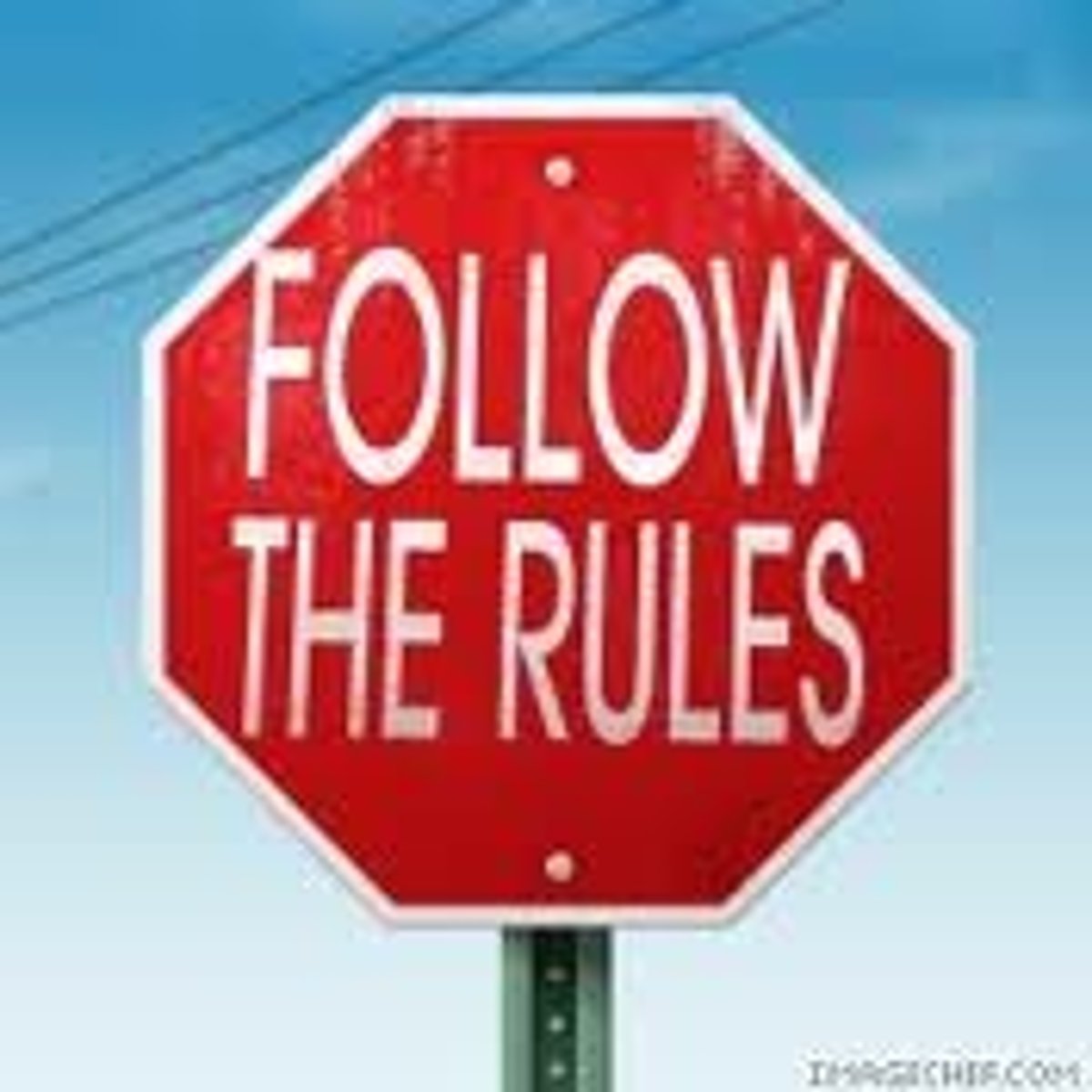
Script
A person's knowledge about the sequence of events expected in a specific setting.
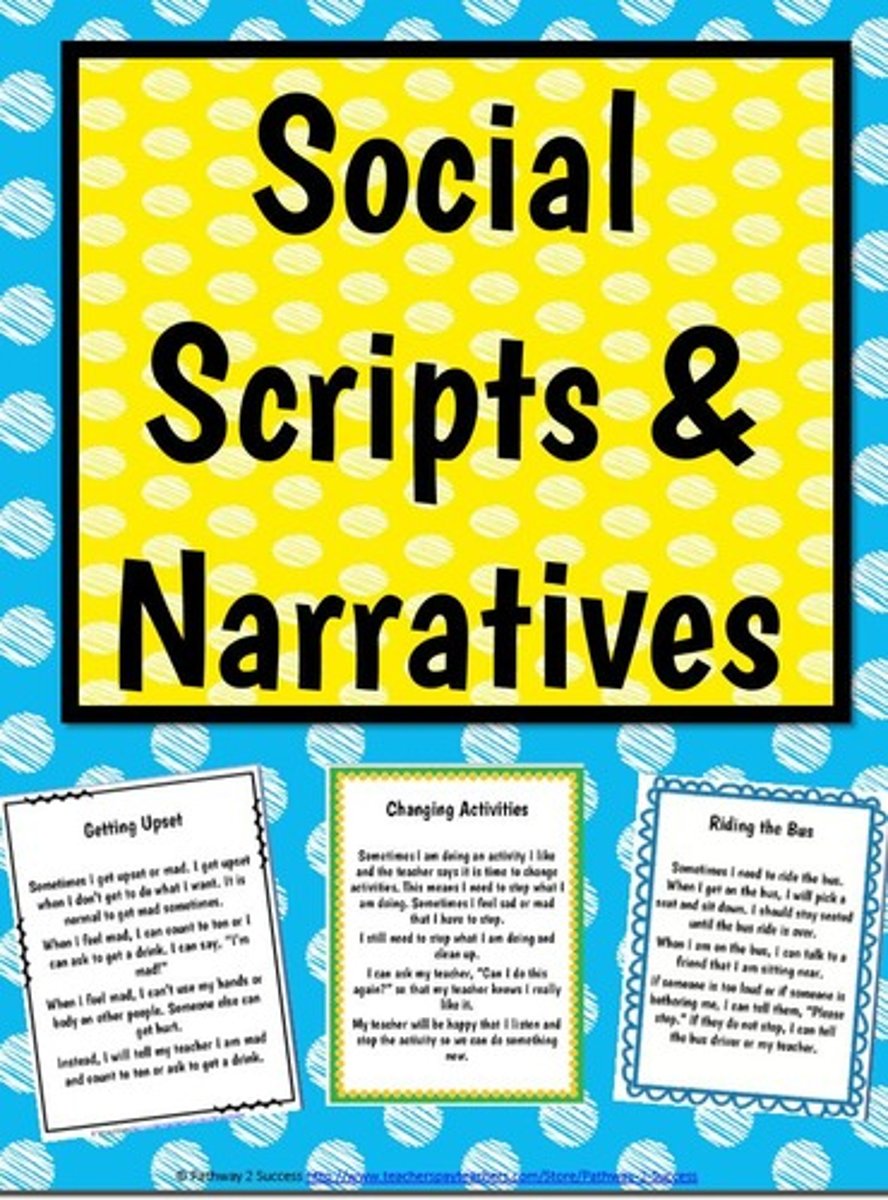
Obedience
Behavior change to comply with demand by an authority figure, Milgram Obedience Study, Participants told to shock "learners" for giving a wrong answer, 65% continued to administer shocks to an unresponsive learner.
Attitude
Our evaluation of a person, an idea, or an object, Can be positive or negative. Affective component - feelings. Behavioral component - effect on behavior. Cognitive component - belief and knowledge.
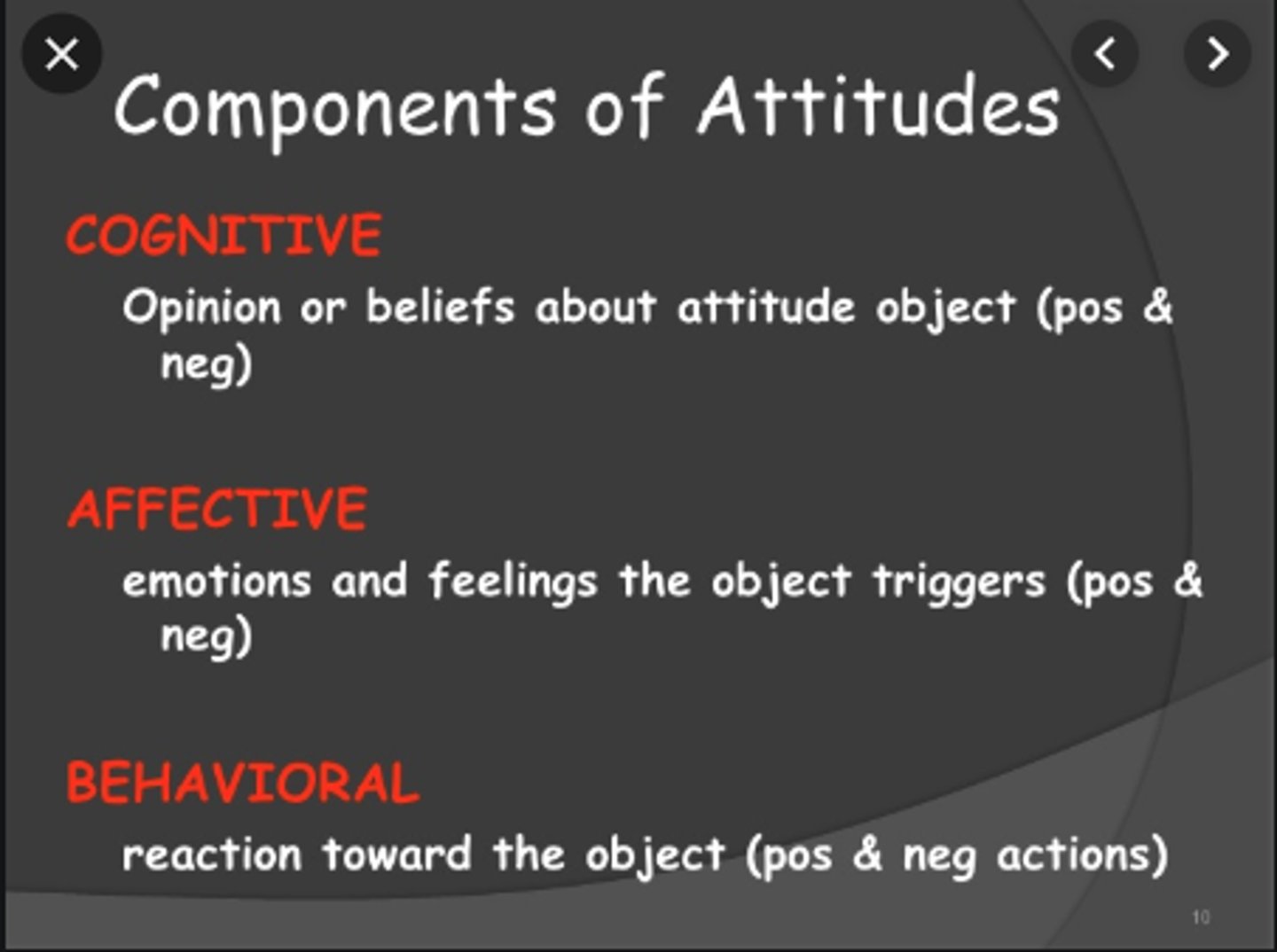
Cognitive Dissonance
Psychological discomfort arising from holding two or more inconsistent attitudes, behaviors, or cognitions. To reduce cognitive dissonance, individuals can:
- Change their behavior
- Change their belief through rationalization or denial
- Add a new cognition.
Persuasion
Process of changing our attitudes toward something based on some kind of communication, we are confronted with it throughout our everyday world. A difficult initiation into a group influences us to like the group more.
Elaboration Likelihood Model
Model of persuasion stating that people will either elaborate on the persuasive message or fail to elaborate on it and that the future actions of those who do elaborate are more predictable than those who do not.
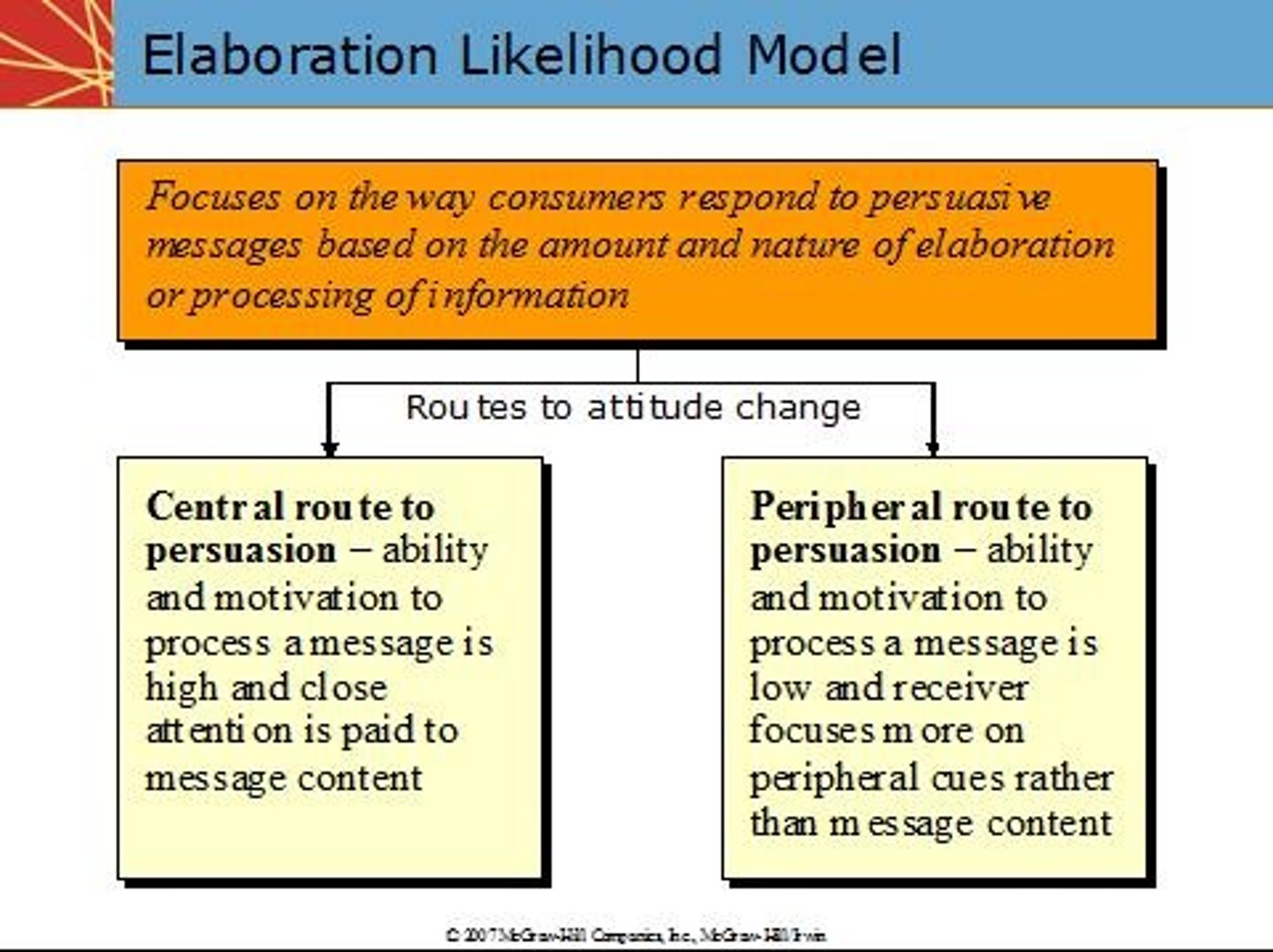
Central Route
- Logic driven.
- Uses data and facts.
- Direct route to persuasion focusing on the quality of information.
- Works best when audience is analytical and willing to engage in processing of the information.
Peripheral Route
- Indirect route.
- Uses peripheral cues to associate positivity with the message.
- Uses characteristics such as positive emotion or celebrity endorsement.
- Results in less permanent attitude change.
Foot-in-the-Door Technique
Get someone to agree to a small favor, only to request a larger favor.

Door-in-the-Face Technique
Make a larger request that you know will not be accepted, then follow with a more moderate request.
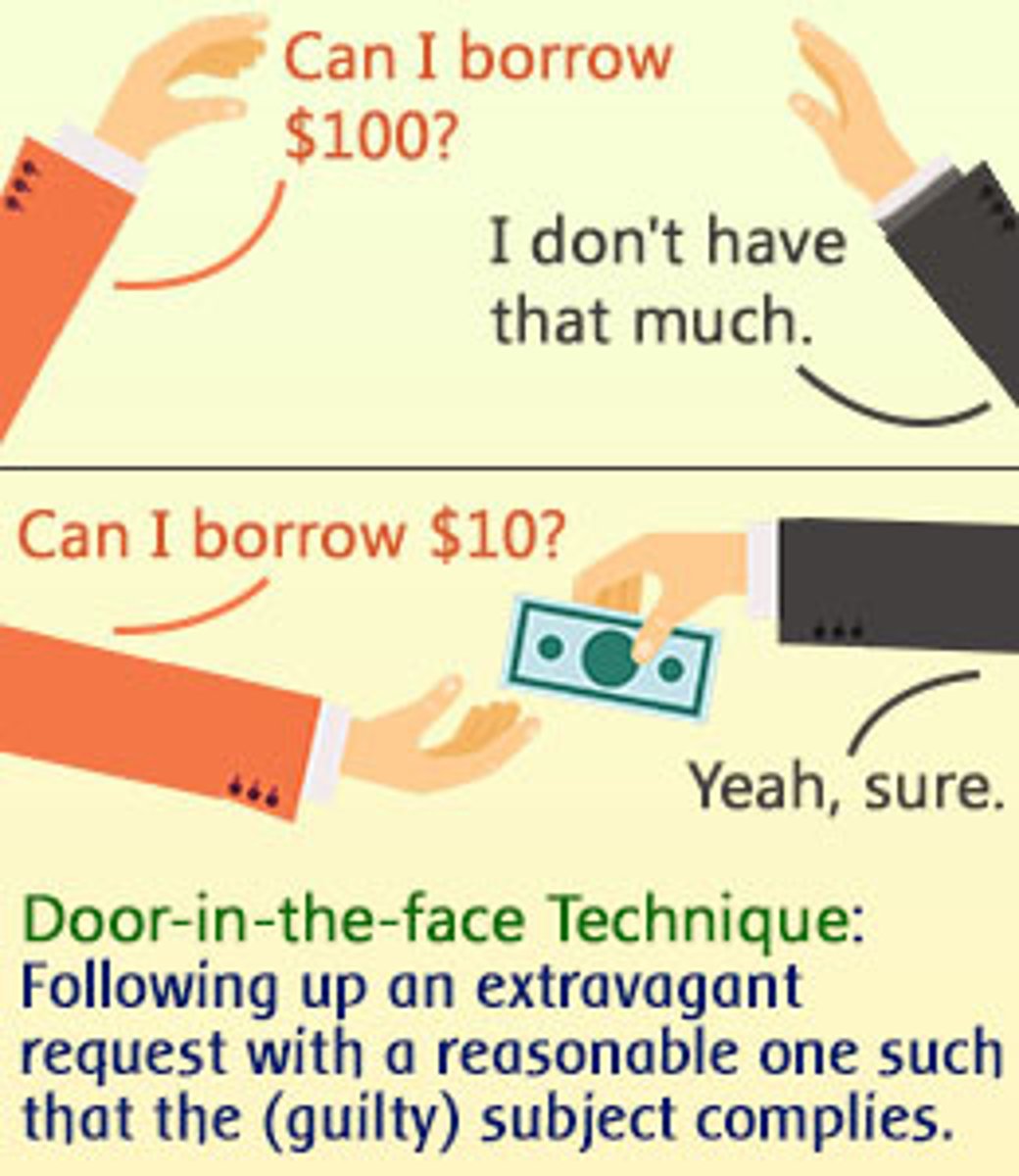
Conformity
Change in a person's behavior to go along with the group, even if they do not agree with the group. Asch Effect. 76% of participants conformed to group pressure at least once.
Motivation to Conform
Normative social influence - conform to group norm to fit in, feel good, and be accepted.
Informational social influence - conform because they believe the group is competent and has the correct information.
The greater the majority, the more likely an individual will conform.
Effects of Conformity on Groups
Groupthink: Modification of the opinions of group members to align with group consensus. Often would not perform outside the group setting.
Group Polarization: Strengthening of an attitude after discussion of views within a group.
Social Facilitation
An individual performs better when an audience is watching than when the individual performs the behavior alone.
Usually occurs when performing a task for which they are skilled or an easy task.
When nervous or less skilled, an audience may hinder rather than help.
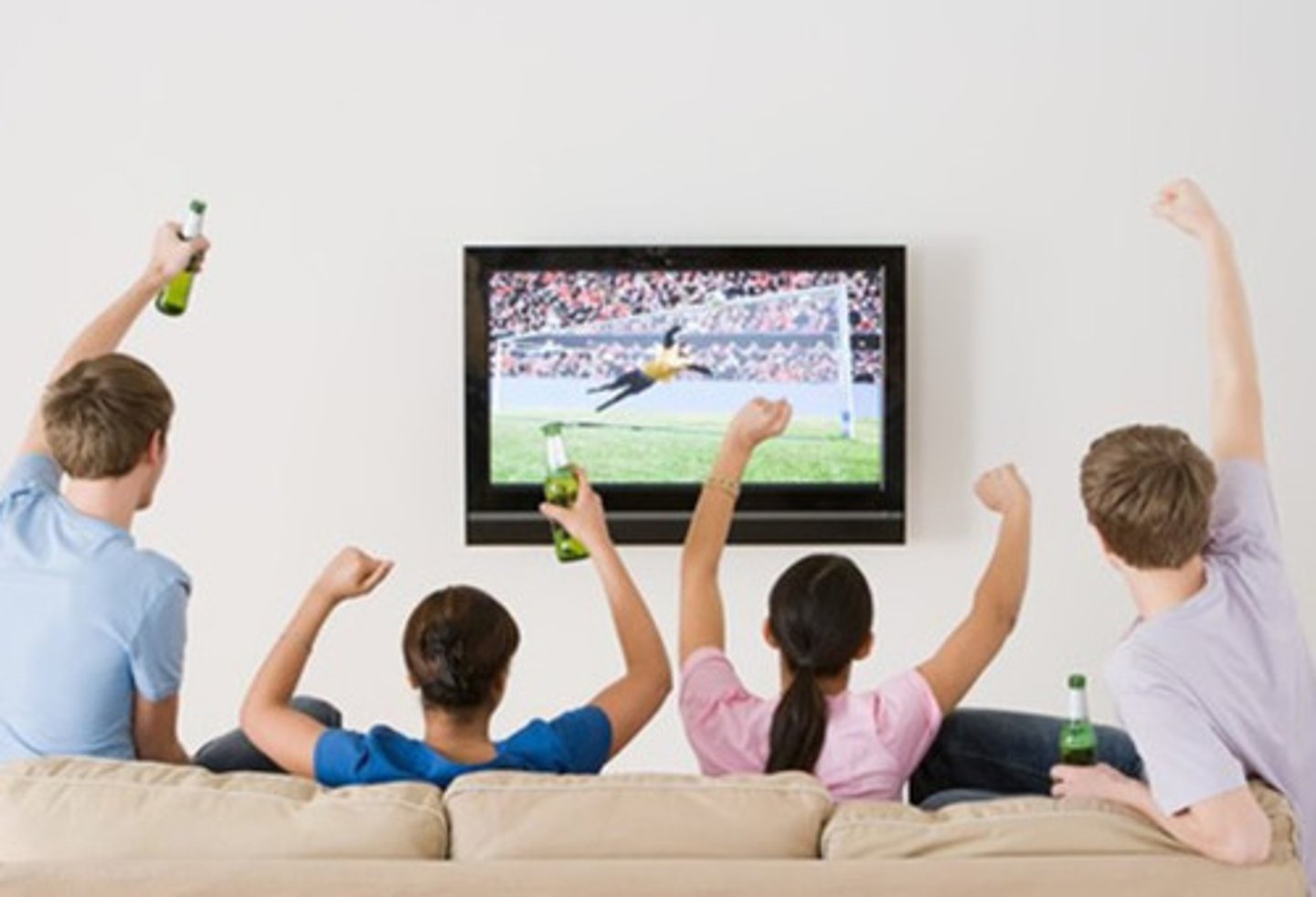
Social Loafing
Exertion of less effort by a person working together with a group, Group performance declines on easy tasks.
Prejudice
Negative attitude and feeling toward an individual based on their group membership.
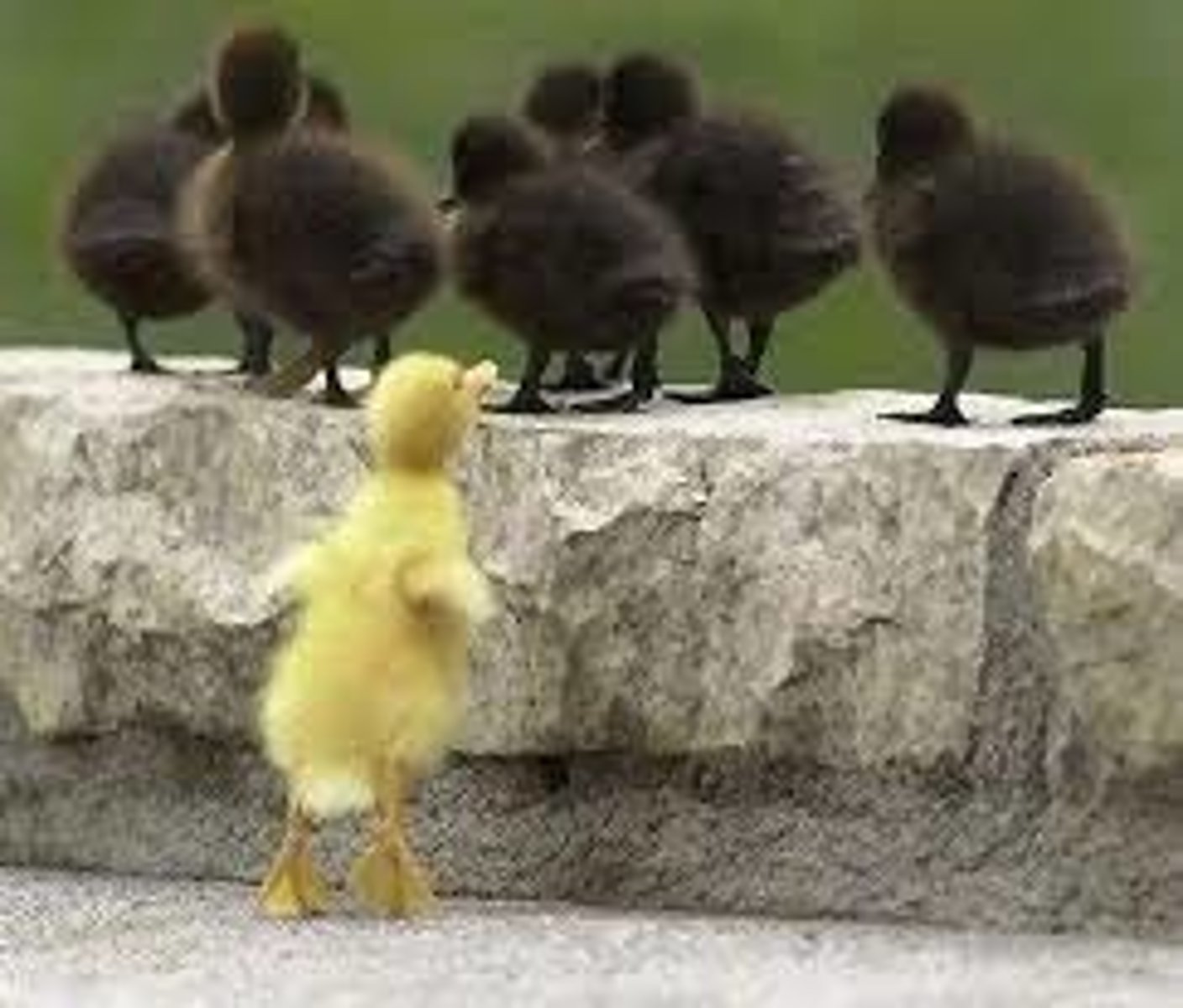
Stereotype
Specific belief or assumption about individuals based on their group membership.
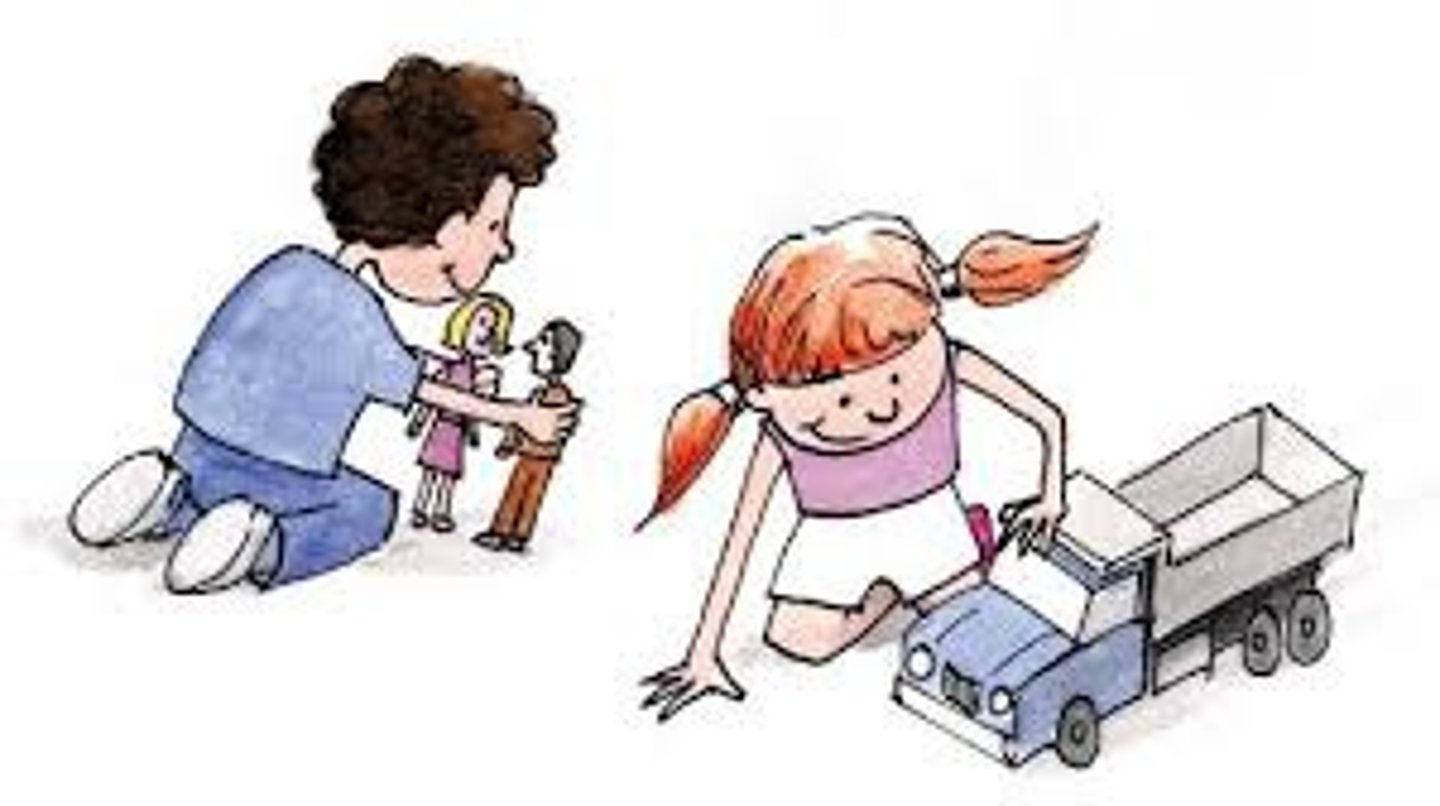
Discrimination
Negative action toward an individual based on their group membership.
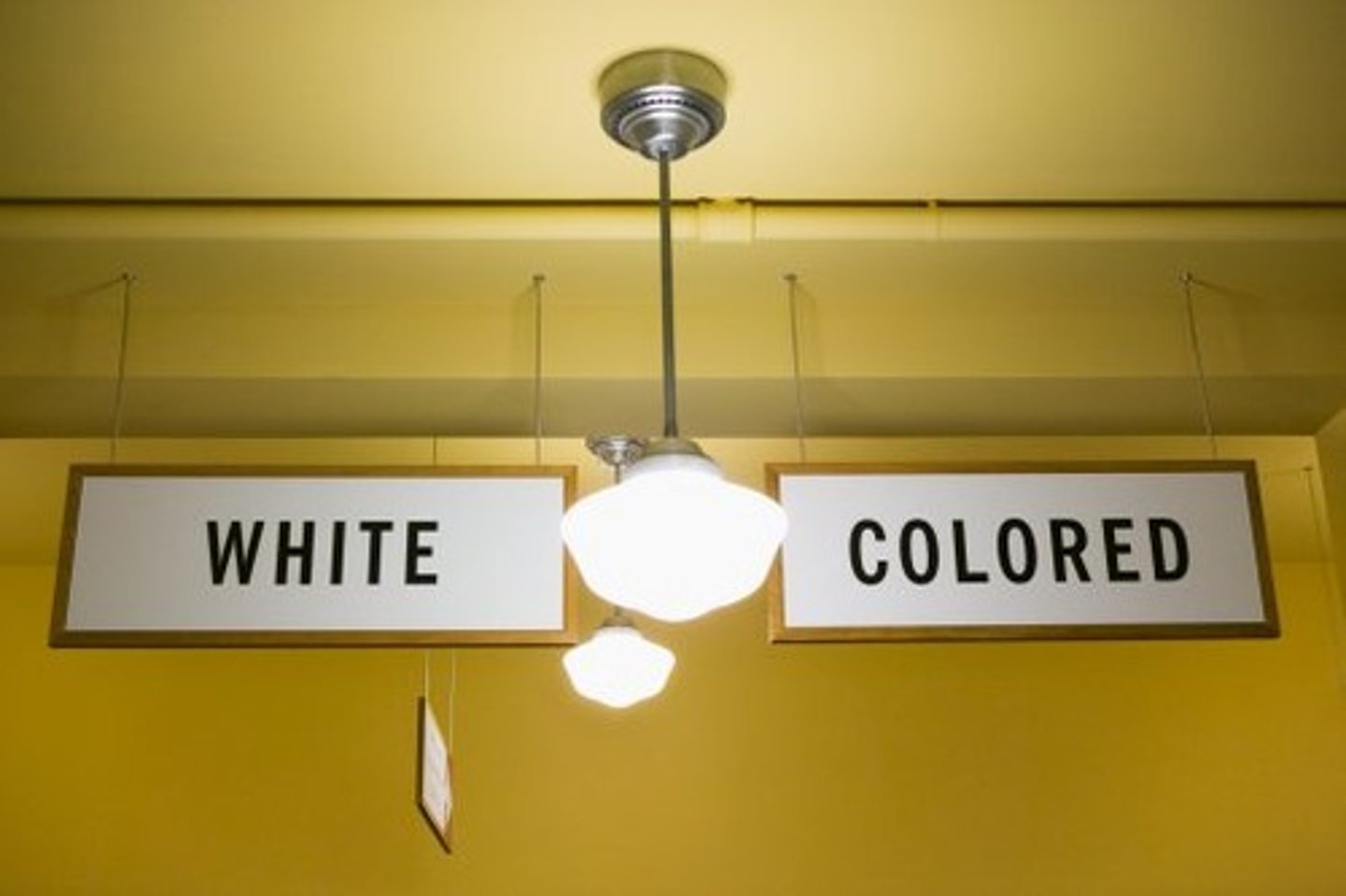
Dual Attitudes Model
explicit attitudes, conscious and controllable, and implicit attitudes, unconscious and uncontrollable.
Confirmation bias
Tendency to focus on information that confirms your existing beliefs. We ignore the contrary.
Representative bias
Tendency to unintentionally stereotype someone or something.
Pygmalion effect
Closely related to the self-fulfilling prophecy; the two terms are even considered synonymous in some circles; it is a type of self-fulfilling prophecy where if you think something will happen, you may unconsciously make it happen through your actions or inaction.

Group Dynamics
In-groups - a group that we identify with or see ourselves as belonging to.
Out-groups - a group that we view as fundamentally different from us.
In-group bias
Prejudice and discrimination because the out-group is perceived as different and is less preferred than our in-group.
Scapegoating
Act of blaming an out-group when the in-group experiences frustration or is blocked from obtaining a goal.
Reconciliation between groups
Forces that promote this are: Expression of empathy, Acknowledgement of past suffering on both sides, Halt of destructive behaviors.
Aggression
Behavior intended to cause pain or harm to others. Male aggressive behavior heavily depends on testosterone. Young men have highest rates of aggressive behaviors and violent crimes. Testosterone levels are higher for men convicted of murder or rape than for burglary or drug offenses.
Testosterone
Increasing testosterone in women: Increased time looking at angry faces, More arguing during collaborative tasks.
Intermale aggression: Observed in most vertebrates, including humans, Adaptive for gaining access to food and mates, Seasonal fluctuations.
Testosterone, Serotonin, and Cortisol
Growing consensus that aggressive behavior does not correlate strongly with any one chemical because it depends on a combination. Testosterone, facilitates aggressive, assertive, dominant behavior. Serotonin tends to inhibit impulsive behaviors. Cortisol inhibits aggression.
Bullying
Repeated negative treatment of another person over time
Attempt to inflict harm, injury, or humiliation.
Gender differences:
Boys -direct, physical aggression
Girls -indirect, social forms of aggression
Effects on the Victim:
Decreased mental health including anxiety and depression.
The Bystander Effect
Phenomenon in which a witness/bystander does not volunteer to help a victim or person in distress. Diffusion of responsibility - tendency for no one in a group to help because the responsibility to help is spread throughout the group.
Prosocial Behavior
Voluntary behavior with the intent to help other people.
Altruism - people's desire to help others even if the costs outweigh the benefits of helping.
Motivation to Help
Empathy/ Capacity to understand another person's perspective, Emphatic people make emotional connections with others and feel compelled to help. Altruism is a form of selfless helping (not motivated by benefits). Feeling good after helping is a consequence, not a cause. Helping is self-serving because our egos are involved, and we receive benefits.
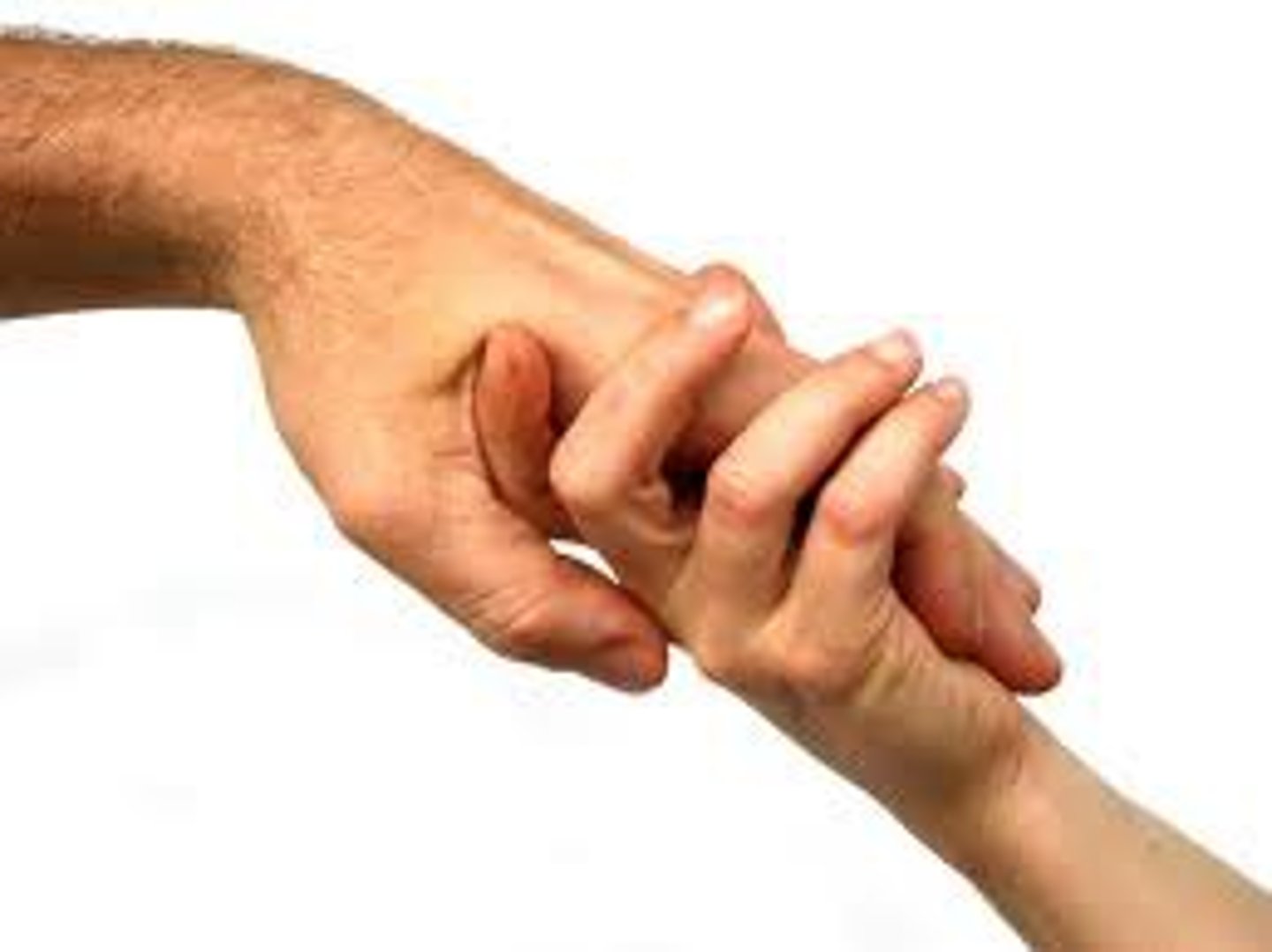
Forming Relationships
Proximity - the people with whom you have the most contact
Similarity - people who are similar to us in background, attitudes, and lifestyle.
Homophily - the tendency for people to form social networks with others who are similar.
Important components of relationships:
Reciprocity - the give and take in relationships.
Self-disclosure - sharing of personal information
Leads to more intimate connections.
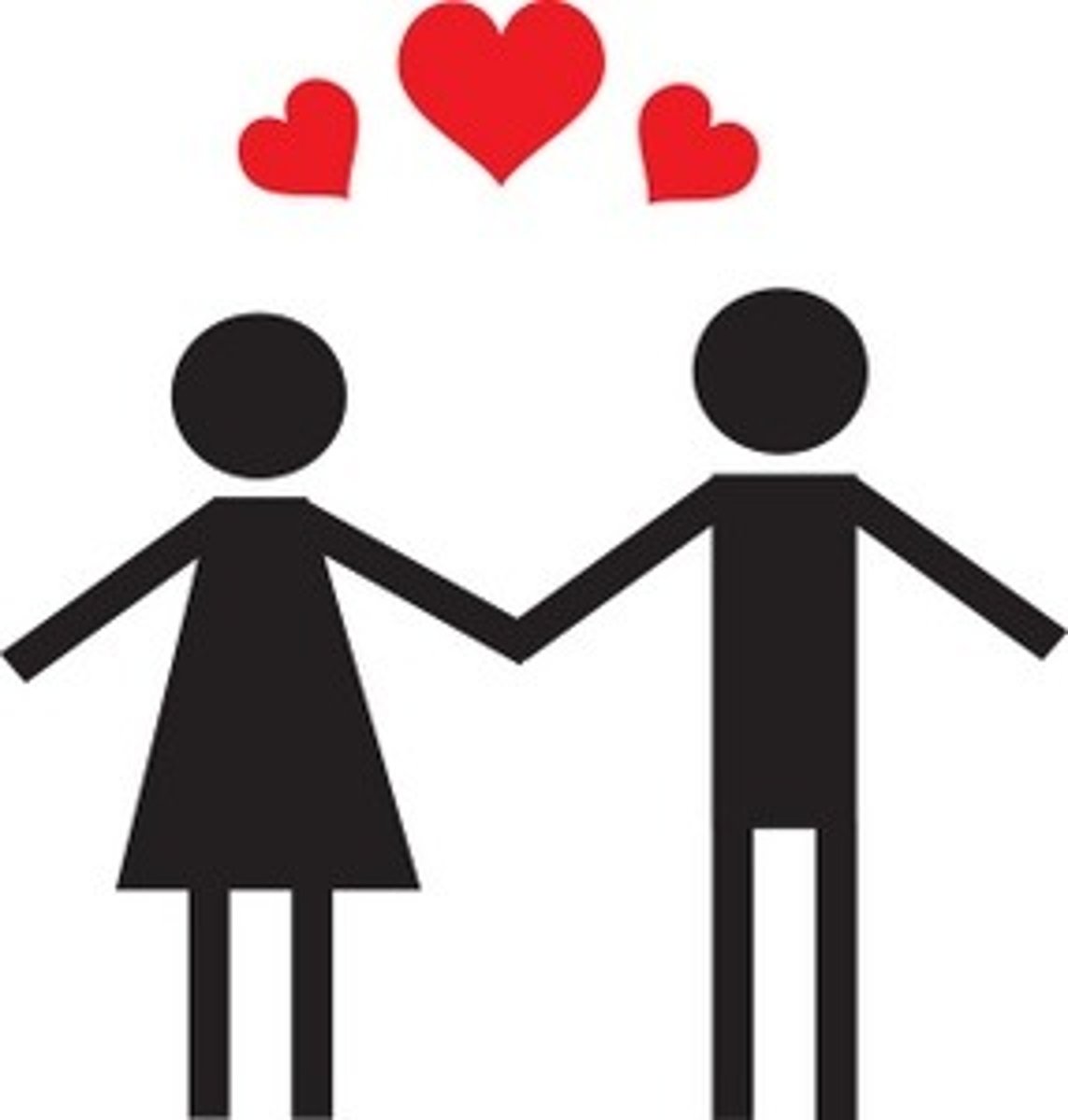
Sternberg's Triangular Theory of Love
Seven types of love described from combinations of three components.
Intimacy - sharing of details and intimate thoughts and emotions.
Passion - physical attraction.
Commitment - standing by the person.
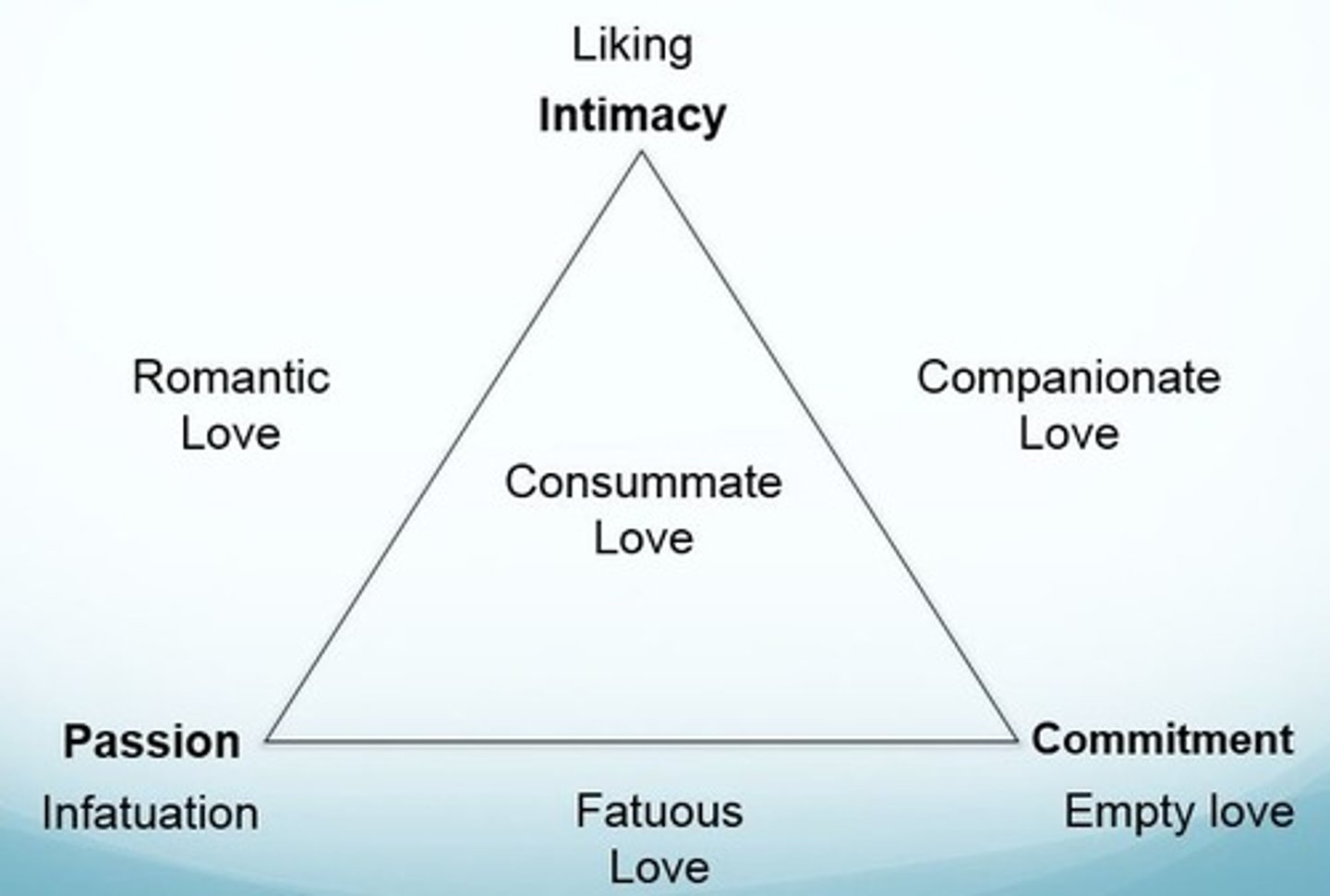
Social Exchange Theory
People may keep track of the costs and benefits of forming and maintaining a relationship.
Typically, only those relationships in which the benefits outweigh the costs will be maintained.

Personality
Long-standing traits and patterns that propel individuals to consistently think, feel, and behave in specific ways.
Hippocrates
Physiology of the body underlies temperament and personality:
Yellow bile from the liver
Black bile from the kidneys
Red blood from the heart
White phlegm from the lungs
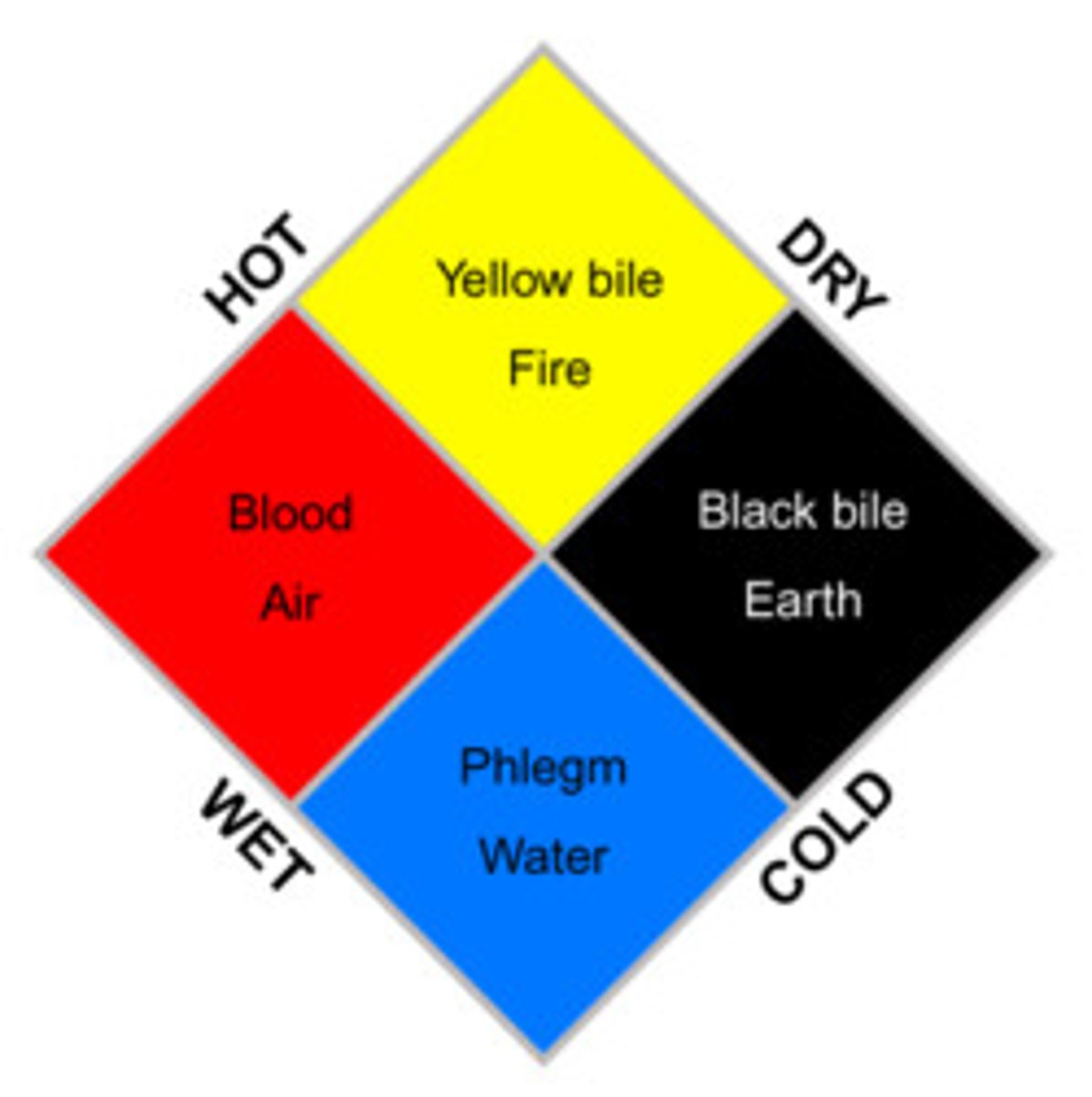
Galen
Prevalent view throughout the Middle Ages. He Believed both diseases and personality differences were explained by imbalances in the humors:
Choleric (yellow bile) passionate, ambitious, bold
Melancholic (black bile) reserved, anxious, unhappy
Sanguine (blood) joyful, eager, optimistic
Phlegmatic (phlegm) calm, reliable, thoughtful
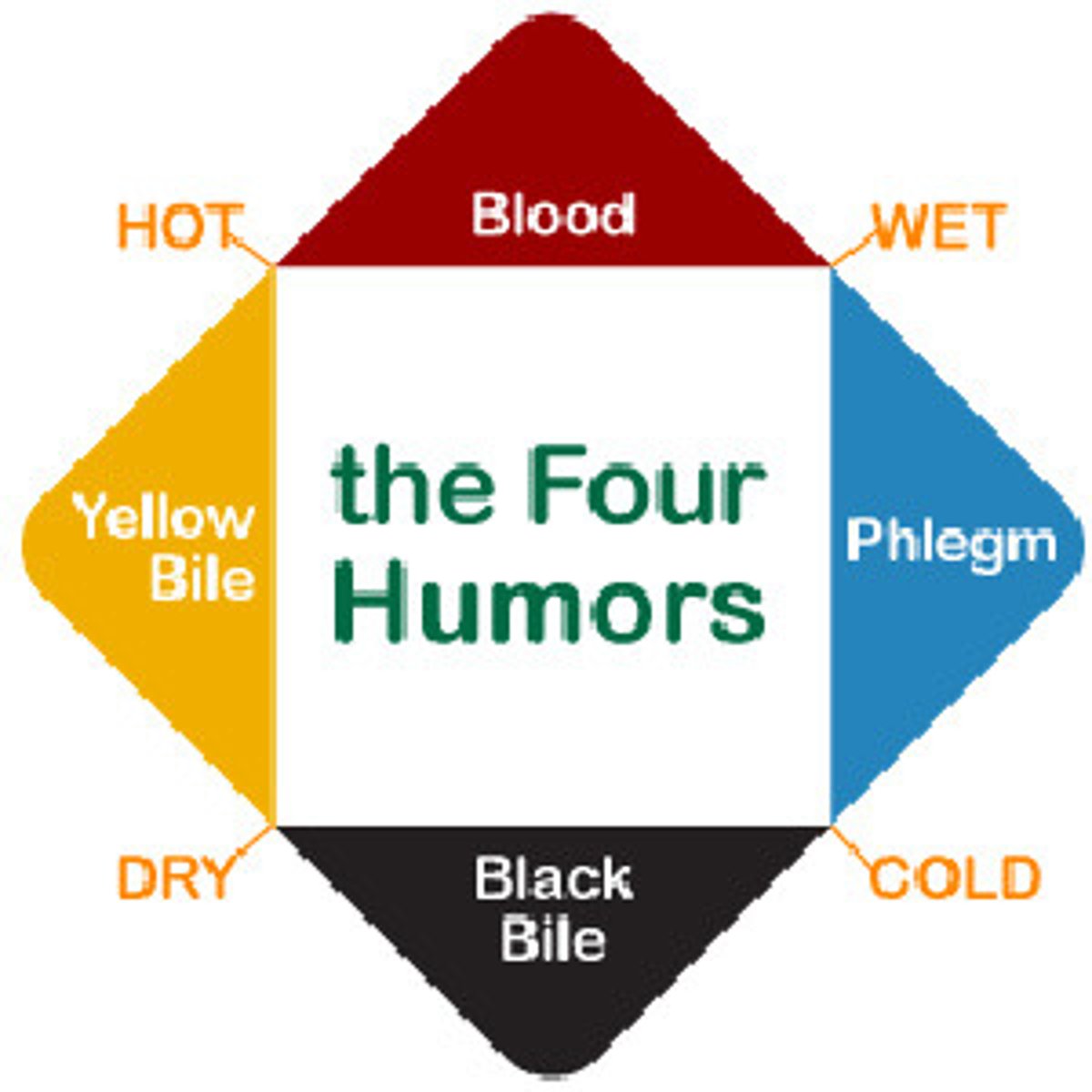
Kant
Divided the four temperaments into two categories
Feeling:
Sanguine strong but short-lasting feelings
Melancholic weak but enduring feelings
Activity:
Choleric intense but not persistent activity
Phlegmatic inactive but enduring

Emotional/non-emotional
Wudnt. Separated strong emotions (melancholic, choleric) from the weak emotions (phlegmatic, sanguine).

Changeable/unchangeable
Wudnt. Divided the changeable temperaments (choleric, sanguine) from the unchangeable ones (melancholic, phlegmatic).

Phrenology
Franz Joseph Gall, Bumps on the surface of skull reflect brain surface and related personality traits and abilities

Reforms in the Treatment of Mental Illness
Psychiatrists were divided into two camps: the somatic and the psychic. Emmanuel movement: talk therapy session for the mentally ill. Hypnosis used as a therapeutic technique, Physicians began to think in terms of curing emotional disturbances by treating the mind instead of the body.
Unconscious
Mental activity that we are unaware of and are unable to access. According to Freud, we are only aware of a small amount, most of our mind remains hidden from us in our unconscious. Unacceptable urges are repressed.
Freudian slip
Saying a word you did not intend to say are sexual/aggressive urges accidently slipping out of our unconscious.
Instincts
Mental representations of internal stimuli that motivate personality and behavior. Life instinct (libido), Death instinct.
Levels of personality
Conscious Vs Unconscious
Id
Ego
Superego
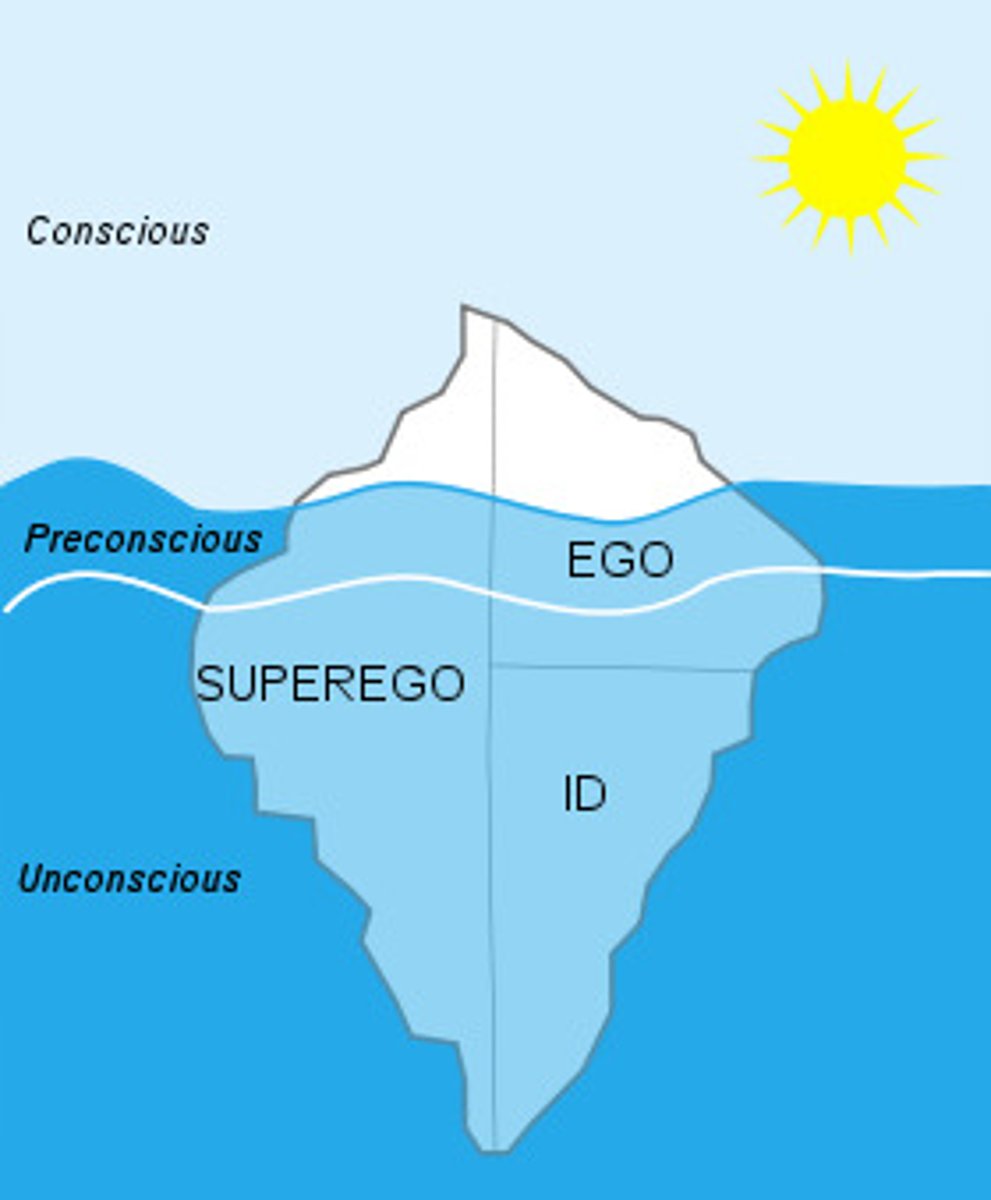
Anxiety
An emotional state of high energy, with the stress response as the body's reaction to it. Functions as a warning that the ego is being threatened.